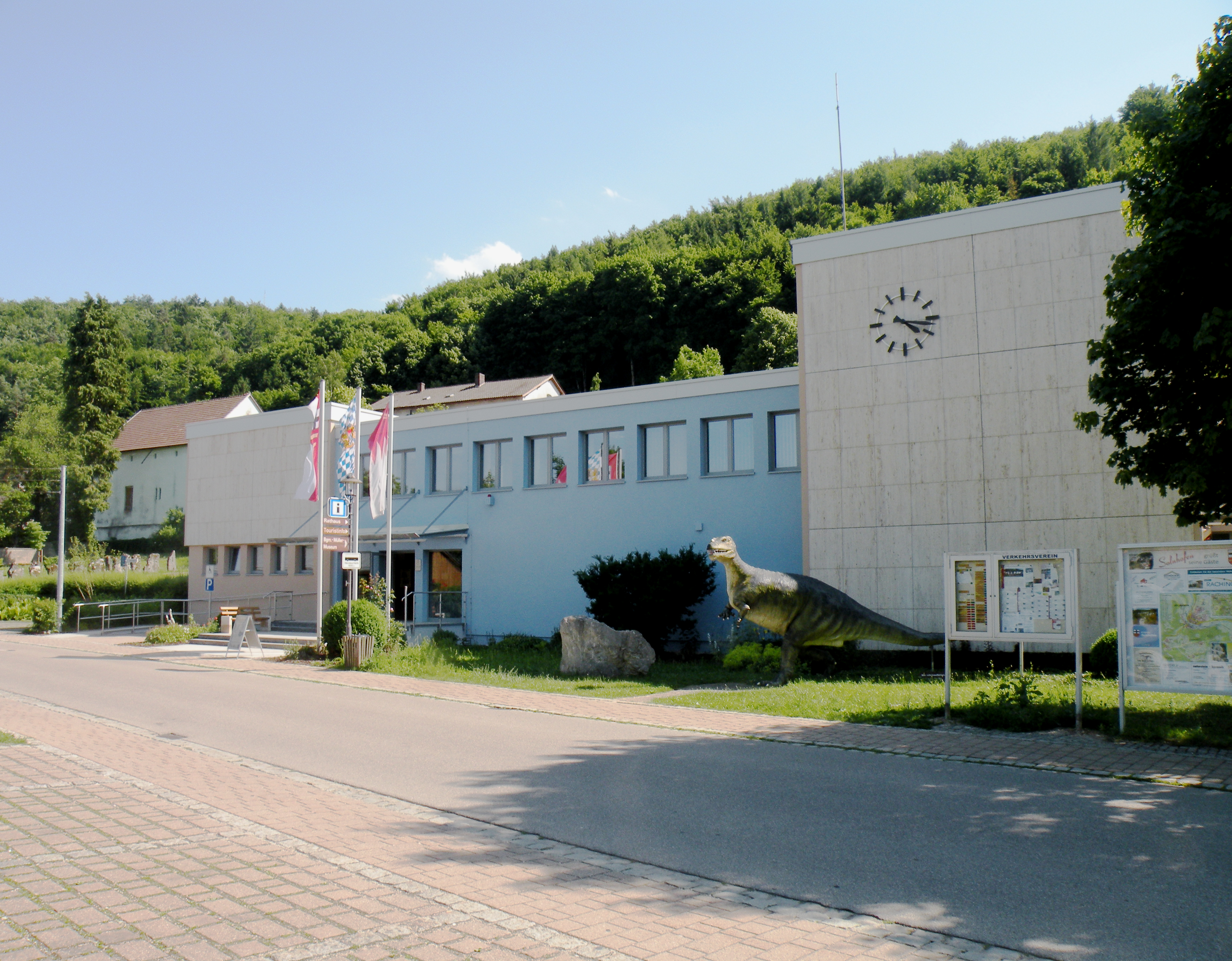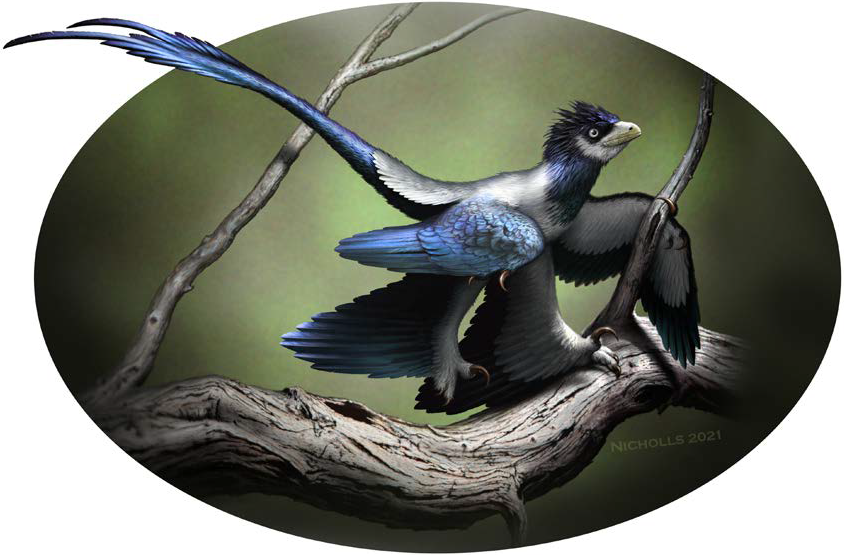|
Wellnhoferia
''Wellnhoferia'' (named after Peter Wellnhofer) is a genus of early prehistoric bird-like theropod dinosaur closely related to ''Archaeopteryx''. It lived in what is now Germany, during the Late Jurassic. While ''Wellnhoferia'' was similar to ''Archaeopteryx'', it had a shorter tail and its fourth toe was shorter than in ''Archaeopteryx''. Andrzej Elżanowski (2001) of the Institute of Zoology of the University of Wrocław, Poland, determined the differences resulted from a "phylogenetic reduction rather than individual variation." The type specimen is the Solnhofen Specimen of ''Archaeopteryx'' (BSP 1999). Discovered in the 1960s near Eichstätt, Germany and described in 1988 by Wellnhofer (as a specimen of ''Archaeopteryx''), it is now in the Bürgermeister-Müller-Museum in Solnhofen. It was originally classified as a ''Compsognathus ''Compsognathus'' (; Ancient Greek, Greek ''kompsos''/κομψός; "elegant", "refined" or "dainty", and ''gnathos''/γνάθος; "jaw" ... [...More Info...] [...Related Items...] OR: [Wikipedia] [Google] [Baidu] |
Archaeopteryx
''Archaeopteryx'' (; ), sometimes referred to by its German name, "" ( ''Primeval Bird'') is a genus of bird-like dinosaurs. The name derives from the ancient Greek (''archaîos''), meaning "ancient", and (''ptéryx''), meaning "feather" or "wing". Between the late 19th century and the early 21st century, ''Archaeopteryx'' was generally accepted by palaeontologists and popular reference books as the oldest known bird (member of the group Avialae). Older potential avialans have since been identified, including ''Anchiornis'', ''Xiaotingia'', '' Aurornis'', and '' Baminornis''. ''Archaeopteryx'' lived in the Late Jurassic around 150 million years ago, in what is now southern Germany, during a time when Europe was an archipelago of islands in a shallow warm tropical sea, much closer to the equator than it is now. Similar in size to a Eurasian magpie, with the largest individuals possibly attaining the size of a raven, the largest species of ''Archaeopteryx'' ... [...More Info...] [...Related Items...] OR: [Wikipedia] [Google] [Baidu] |
Archaeopterygidae
Archaeopterygidae is a group of paravian dinosaurs, known from the latest Jurassic and earliest Cretaceous of Europe. In most current classifications, it contains only the genera ''Archaeopteryx'' and ''Wellnhoferia''. As its name suggests, ''Protarchaeopteryx'' was also once referred to this group, but most paleontologists now consider it an oviraptorosaur. Other referred genera, like ''Jurapteryx'', ''Wellnhoferia'', and "Proornis", are probably synonymous with ''Archaeopteryx'' (the former two) or do not belong into this group (the last). ''Jinfengopteryx'' was originally described as an archaeopterygid, though it was later shown to be a troodontid.Chiappe, L.M. (2007) ''Glorified Dinosaurs: The Origin and Early Evolution of Birds.'' Sydney: UNSW Press. . A few studies have recovered ''Anchiornis'' and ''Xiaotingia'' (usually considered part of a distinct clade, Anchiornithidae) to also be members of the Archaeopterygidae, though most subsequent analyses have failed to arrive at ... [...More Info...] [...Related Items...] OR: [Wikipedia] [Google] [Baidu] |
Andrzej Elżanowski
Andrzej Elżanowski (born 21 January 1950) is a Polish paleontologist and vertebrate zoologist specializing in bird phylogeny. Together with Peter Wellnhofer he described a coelurosaur theropod ''Archaeornithoides'' in 1992. He works also on Mesozoic birds, especially Archaeopterygiformes – he is author of the chapter "Archaeopterygidae" in book edited by Luis Chiappe and Lawrence Witmer entitled ''Mesozoic Birds: Above the Heads of Dinosaurs''. In 2001 he determined that Solnhofen specimen of ''Archaeopteryx'' represents new species and genus and coined new specific name – ''Wellnhoferia grandis ''Wellnhoferia'' (named after Peter Wellnhofer) is a genus of early prehistoric bird-like theropod dinosaur closely related to ''Archaeopteryx''. It lived in what is now Germany, during the Late Jurassic. While ''Wellnhoferia'' was similar to ''A ...'' – for it. He works now in the Faculty of „Artes Liberales” at the University of Warsaw. References Polish paleontologi ... [...More Info...] [...Related Items...] OR: [Wikipedia] [Google] [Baidu] |
Peter Wellnhofer
Peter Wellnhofer (born Munich, 1936) is a German paleontologist at the Bayerische Staatssammlung fur Paläontologie in Munich. He is best known for his work on the various fossil specimens of ''Archaeopteryx'' or "Urvogel", the first known bird. Wellnhofer's other work includes ''The Illustrated Encyclopedia of Pterosaurs'' from 1991. '' Wellnhoferia'', a bird closely related to ''Archaeopteryx'', or a species of the Urvogel itself, was named in his honour in 2001. The pterosaur '' Wellnhopterus'' was named in his honour in 2021. In 2007 a special meeting of pterosaur experts in Munich was dedicated to Wellnhofer, describing him as "the foremost authority on pterosaurs for the last four decades." The meeting produced a festschrift In academia, a ''Festschrift'' (; plural, ''Festschriften'' ) is a book honoring a respected person, especially an academic, and presented during their lifetime. It generally takes the form of an edited volume, containing contributions from the h ... ... [...More Info...] [...Related Items...] OR: [Wikipedia] [Google] [Baidu] |
Late Jurassic
The Late Jurassic is the third Epoch (geology), epoch of the Jurassic Period, and it spans the geologic time scale, geologic time from 161.5 ± 1.0 to 143.1 ± 0.8 million years ago (Ma), which is preserved in Upper Jurassic stratum, strata.Owen 1987. In European lithostratigraphy, the name "Malm" indicates rocks of Late Jurassic age. In the past, ''Malm'' was also used to indicate the unit of geological time, but this usage is now discouraged to make a clear distinction between lithostratigraphic and geochronologic/chronostratigraphic units. Subdivisions The Late Jurassic is divided into three ages, which correspond with the three (faunal) stages of Upper Jurassic rock: Paleogeography During the Late Jurassic Epoch, Pangaea broke up into two supercontinents, Laurasia to the north, and Gondwana to the south. The result of this break-up was the emergence of the Atlantic Ocean, which initially was relatively narrow. Life forms This epoch is well known for many famous types of d ... [...More Info...] [...Related Items...] OR: [Wikipedia] [Google] [Baidu] |
Bürgermeister-Müller-Museum
The Bürgermeister-Müller-Museum is a natural history museum in Solnhofen, Germany. In 1954 the mayor, Friedrich Mueller, made his private collection accessible to the public. In 1968 the museum was officially founded by the Solnhofen municipality. It was opened in 1970. The museum collection, which extends over two floors, mainly consists of fossils from the Solnhofen Plattenkalk and includes pterosaurs, one of the eleven known specimens of the Jurassic bird ''Archaeopteryx'' and an extensive collection of fossil fish. Also, there is a department dedicated to lithography Lithography () is a planographic method of printing originally based on the miscibility, immiscibility of oil and water. The printing is from a stone (lithographic limestone) or a metal plate with a smooth surface. It was invented in 1796 by .... External links Official Site (German) Natural history museums in Germany Museums in Bavaria Fossil museums in Germany Buildings and structures in Weiß ... [...More Info...] [...Related Items...] OR: [Wikipedia] [Google] [Baidu] |
Tithonian Dinosaurs
In the geological timescale, the Tithonian is the latest age of the Late Jurassic Epoch and the uppermost stage of the Upper Jurassic Series. It spans the time between 149.2 ±0.7 Ma and 143.1 ±0.6 (million years ago). It is preceded by the Kimmeridgian and followed by the Berriasian (part of the Cretaceous). Stratigraphic definitions The Tithonian was introduced in scientific literature by German stratigrapher Albert Oppel in 1865. The name Tithonian is unusual in geological stage names because it is derived from Greek mythology. Tithonus was the son of Laomedon of Troy and fell in love with Eos, the Greek goddess of dawn. His name was chosen by Albert Oppel for this stratigraphical stage because the Tithonian finds itself hand in hand with the dawn of the Cretaceous. The base of the Tithonian stage is at the base of the ammonite biozone of '' Hybonoticeras hybonotum''. A global reference profile (a GSSP or golden spike) for the base of the Tithonian had in 2009 not yet been ... [...More Info...] [...Related Items...] OR: [Wikipedia] [Google] [Baidu] |
Dinosaur Genera
Dinosaurs are a diverse group of reptiles of the clade Dinosauria. They first appeared during the Triassic Geological period, period, between 243 and 233.23 million years ago (mya), although the exact origin and timing of the #Evolutionary history, evolution of dinosaurs is a subject of active research. They became the dominant terrestrial vertebrates after the Triassic–Jurassic extinction event 201.3 mya and their dominance continued throughout the Jurassic and Cretaceous periods. The fossil record shows that birds are feathered dinosaurs, Evolution of birds, having evolved from earlier Theropoda, theropods during the Late Jurassic epoch, and are the only dinosaur lineage known to have survived the Cretaceous–Paleogene extinction event approximately 66 mya. Dinosaurs can therefore be divided into avian dinosaurs—birds—and the extinct non-avian dinosaurs, which are all dinosaurs other than birds. Dinosaurs are varied from taxonomy (biology), taxonomic, ... [...More Info...] [...Related Items...] OR: [Wikipedia] [Google] [Baidu] |
Feathered Dinosaurs
A feathered dinosaur is any species of dinosaur possessing feathers. That includes all species of birds, and in recent decades evidence has accumulated that many non-avian dinosaur species also possessed feathers in some shape or form. The extent to which feathers or feather-like structures were present in dinosaurs as a whole is a subject of ongoing debate and research. It has been suggested that feathers had originally functioned as thermal insulation, as it remains their function in the down feathers of infant birds prior to their eventual modification in birds into structures that support flight. Since scientific research began on dinosaurs in the early 1800s, they were generally believed to be closely related to modern reptiles such as lizards. The word ''dinosaur'' itself, coined in 1842 by paleontologist Richard Owen, comes from the Greek for 'terrible lizard'. That view began to shift during the so-called dinosaur renaissance in scientific research in the late 1960s; ... [...More Info...] [...Related Items...] OR: [Wikipedia] [Google] [Baidu] |
Compsognathus
''Compsognathus'' (; Ancient Greek, Greek ''kompsos''/κομψός; "elegant", "refined" or "dainty", and ''gnathos''/γνάθος; "jaw") is a genus of small, bipedalism, bipedal, carnivore, carnivorous theropoda, theropod dinosaur. Members of its single species ''Compsognathus longipes'' could grow to around the size of a chicken (bird), chicken. They lived about 150 mya (unit), million years ago, during the Tithonian Stage (stratigraphy), age of the late Jurassic Period (geology), period, in what is now Europe. Paleontologists have found two well-preserved fossils, one in Germany in the 1850s and the second in France more than a century later. Today, ''C. longipes'' is the only recognized species, although the French specimen was once thought to belong to a separate species named ''C. corallestris''. Many presentations still describe ''Compsognathus'' as "chicken-sized" dinosaurs because of the size of the German specimen, which is now believed to be a juvenile. ''Comps ... [...More Info...] [...Related Items...] OR: [Wikipedia] [Google] [Baidu] |
Solnhofen
Solnhofen is a municipality in the district of Weißenburg-Gunzenhausen in the region of Middle Franconia in the ' of Bavaria in Germany. It is in the Altmühl valley. The local area is famous in geology and palaeontology for Solnhofen limestone. This is a very fine-grained limestone from the Jurassic period Lagerstätte that preserves detailed fossil specimens. Alois Senefelder used specially prepared blocks of the fine Solnhofen limestone for the process of lithography which he invented in 1798. The quarrying of this lithographic limestone subsequently yielded spectacular finds, including '' Archaeopteryx'', commemorated in the bird's full name ''Archaeopteryx lithographica''. All 13 known specimens have come from the Solnhofen area. Geography Solnhofen is located on the Altmühl in Bavaria. It contains two districts: Hochholz and Eßlingen. It is adjacent to the municipalities Pappenheim, Langenaltheim, and Mörnsheim. History Solnhofen was known as "Husen" in th ... [...More Info...] [...Related Items...] OR: [Wikipedia] [Google] [Baidu] |





